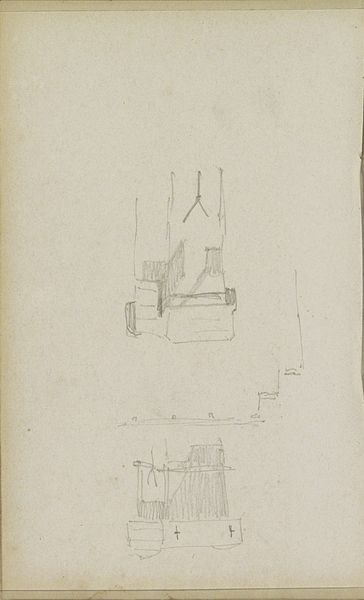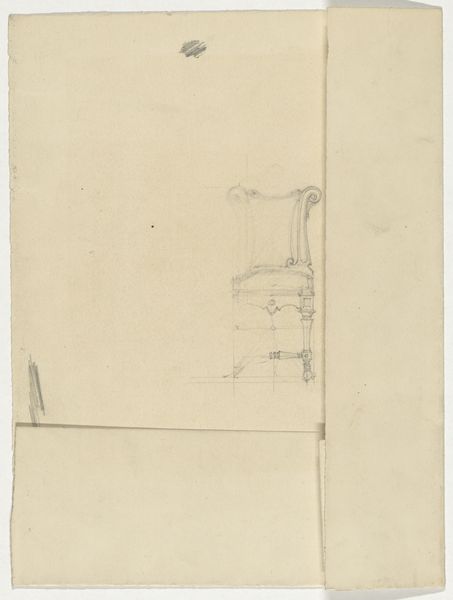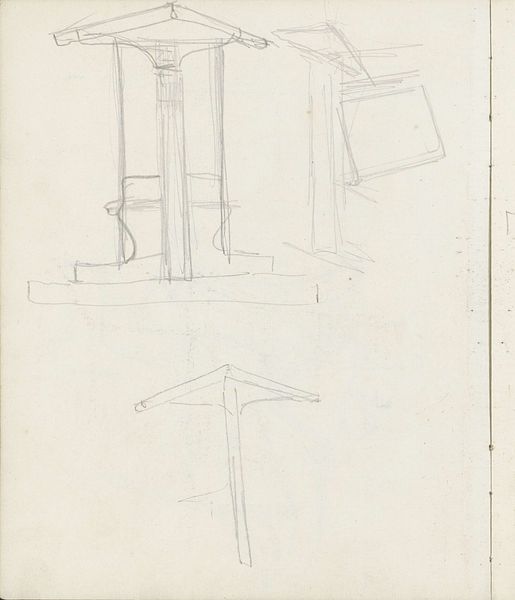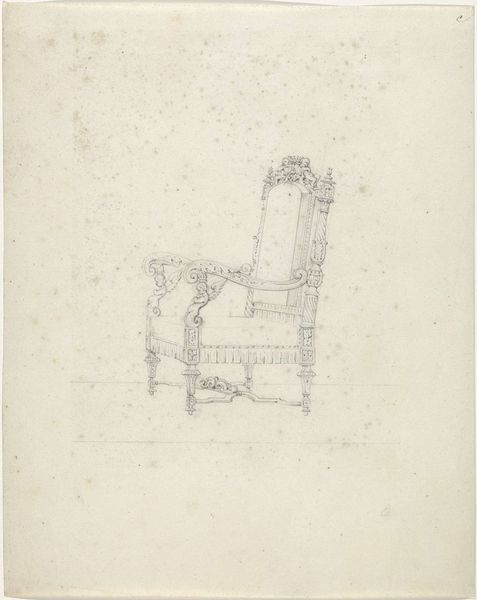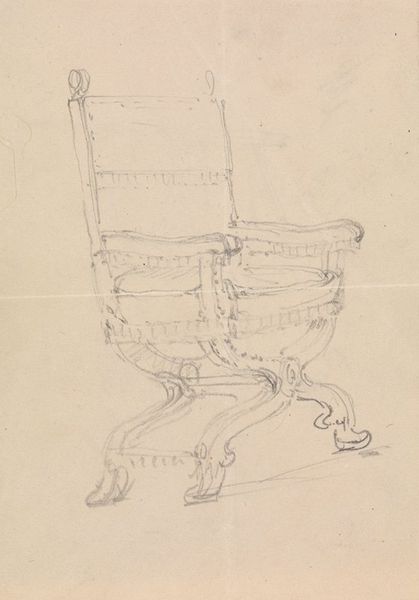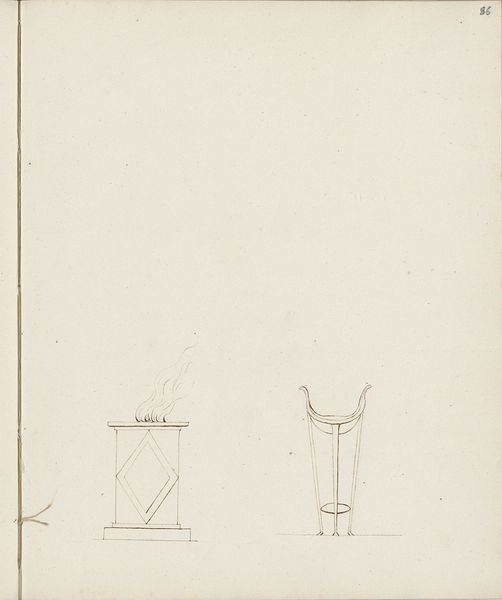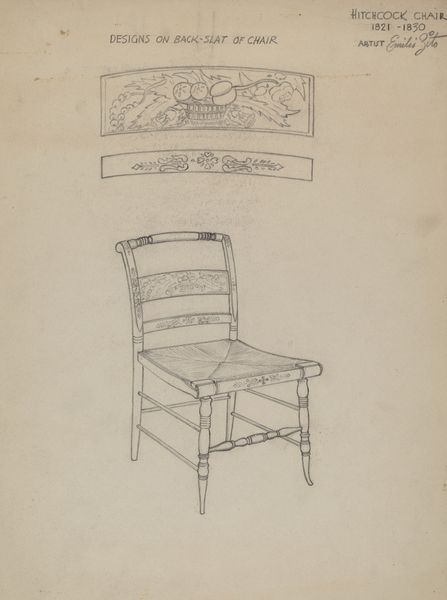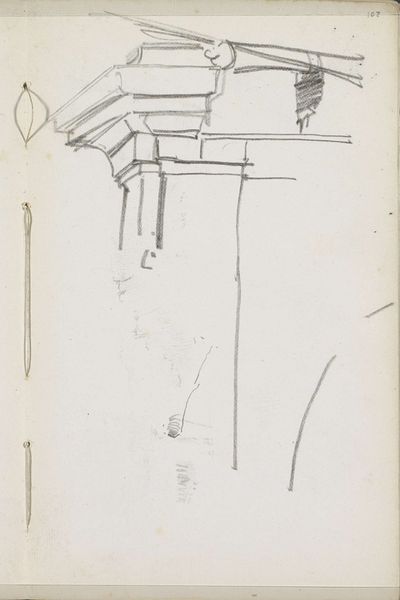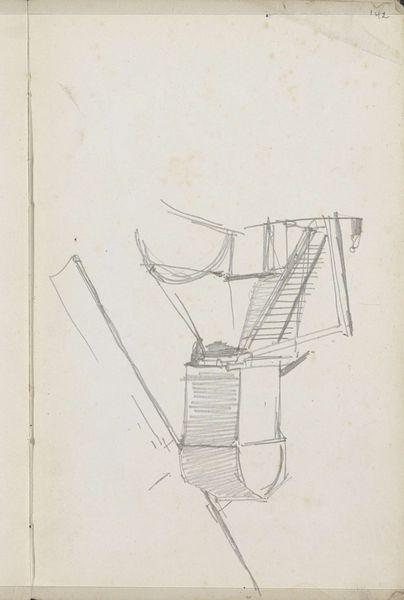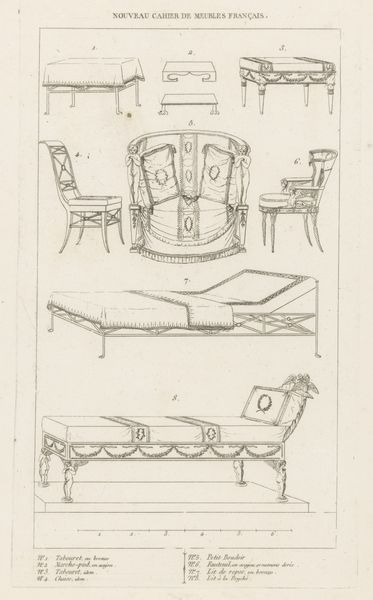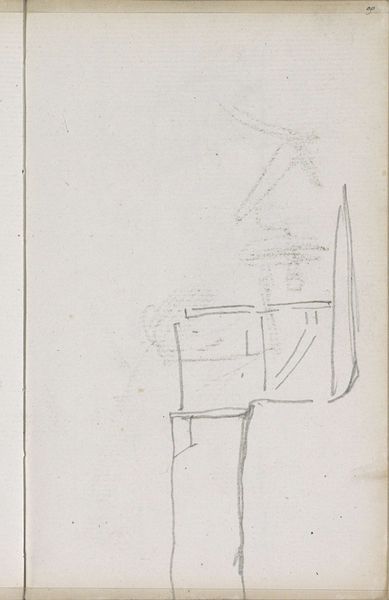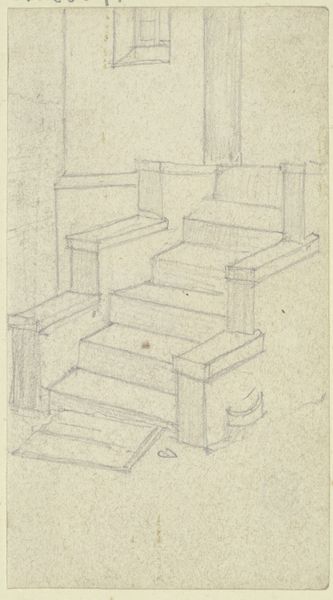
En lænestol med stærkt krummede ben, set forfra og fra siden 1743 - 1809
0:00
0:00
drawing, pencil
#
drawing
#
neoclacissism
#
geometric
#
pencil
#
line
Dimensions: 178 mm (height) x 127 mm (width) (bladmaal)
Curator: This is a design sketch by Nicolai Abildgaard, a study for a chair dating sometime between 1743 and 1809. The medium is pencil on paper. Editor: My first impression is that this sketch is about understated elegance, a conscious return to classical simplicity through form and geometry. Curator: Indeed. Abildgaard was a key figure in bringing Neoclassicism to Denmark. Notice the chair's geometric forms – the diamond, the circles— and the overall emphasis on line. They reference Greek and Roman ideals of harmony and proportion. How might this connect to societal shifts? Editor: Absolutely. Neoclassicism wasn't just about aesthetics; it mirrored a desire for rationality and order after periods of revolution and excess. This chair embodies that striving for structure, reflecting ideals valued in post-revolutionary Europe. This era also produced increased division among societal classes. Who, ultimately, would get to rest in this seat? Curator: An important question. Also note how the chair’s legs curve gracefully. Curving forms have long signified stability and permanence across various cultures, referencing natural elements of growth, cycles, and resilience. How might this influence our interpretation? Editor: That curvilinear element suggests tension. While striving for order, Neoclassicism also flirted with nature. So we see a conscious reconciliation of oppositional artistic inclinations. The natural versus the manufactured. However, one might read in these tense curved forms an allusion to societal pressures as opposed to mere tension. Curator: That's a powerful interpretation! In cultural memory, the curve remains symbolic of a tension between humanity's reach and an untameable earth. What can this inform regarding a cultural symbology around rest and luxury? Editor: This sketch reminds us that even seemingly simple objects can reflect profound cultural shifts. By deconstructing such relics, we confront the societal forces at play—offering critical insights into history, even design history. Curator: It invites us to sit with these tensions, prompting us to reflect upon classical ideals and where we may find them represented in today’s cultural imagination.
Comments
No comments
Be the first to comment and join the conversation on the ultimate creative platform.
